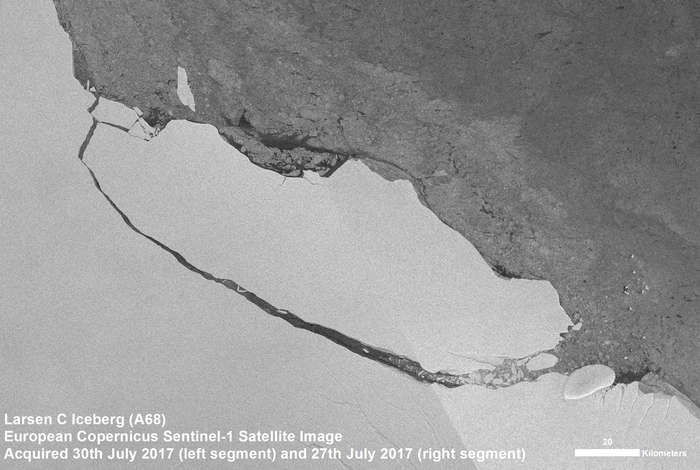Gepubliceerd op 9 augustus 2017
Thanks to the satellite era, we recently witnessed the birth of one of the biggest icebergs on record. While the breakup of Antarctica’s Larsen C ice shelf hit the headlines around the world, this dramatic event also presents scientists with a unique opportunity to learn more about ice-sheet stability.
Source: ESA Observing the Earth
On 12 July, Europe’s Copernicus Sentinel-1 mission returned radar images showing that a lump of ice more than twice the size of Luxembourg had broken off the Antarctic Peninsula.
Since then, this large tabular iceberg – known as A68 – has drifted about 5 km from the ice shelf. Images from Sentinel-1 also show that a cluster of more than 11 smaller icebergs has now also formed, the largest of which is over 13 km long.
These ‘bergy bits’ have broken off both the giant iceberg and the remaining ice shelf.
Anna Hogg from the University of Leeds, UK, commented, “Our ability to routinely monitor rapidly unfolding events such as this has been revolutionised in the last few years by European investment in the Copernicus satellites.”
